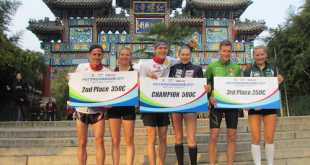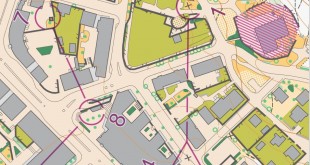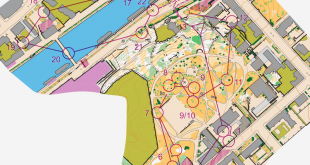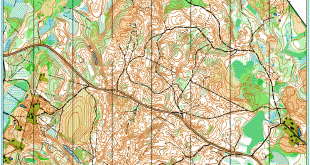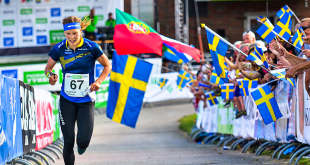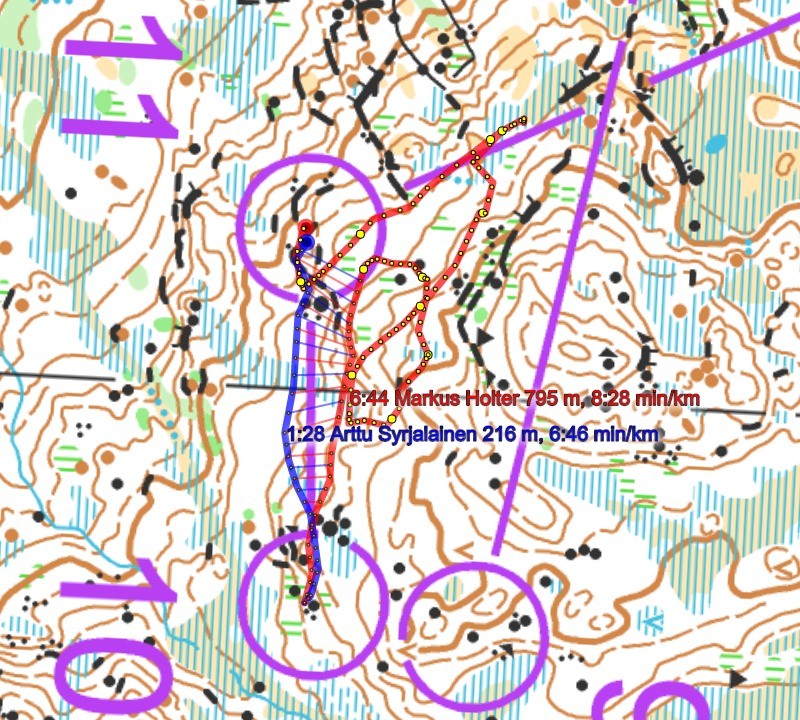
Technical difficulties rather than major routechoice problems decided the Junior World Orienteering Championships Long distance 2015 in Rauland, Norway.
Some of the top runners did several minutes of mistakes – often very close to the controls (see for example Markus Holter’s mistake at the 11th control above)
Analysis Men
Olli Ojanaho (FIN) won 1:15 minutes ahead of Simon Hector (SWE) with Andreas Soelberg (NOR) in 3rd at 1:26. Olli Ojanaho won 2 of 25 legs and had time losses of more than a minute. The fight for victory was close; Simon Hector (lost 1:38 at leg 12, finished 1:15 behind in 2nd) and Markus Holter (lost 5:16 at leg 11, finished 4:41 behind in 12th).
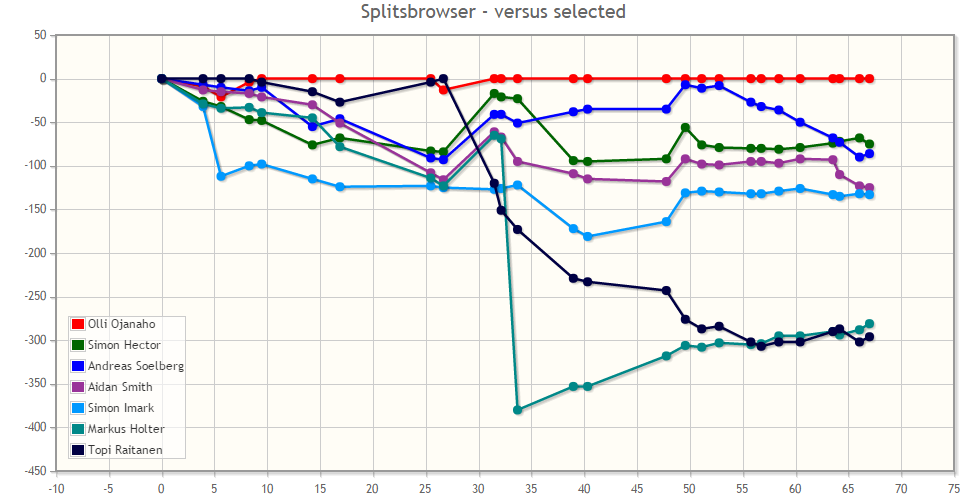
Topi Raitanen took the lead at the first control and stayed in front until control 3. The race lead then changed between Algirdas Bartkevicius (leading at the 4th control, losing 38 seconds and the lead at the 5th), Olli Ojanaho (leading from the 5th to 7th control, losing 19 seconds and the lead at the 8th) and Topi Raitanen (leading at the 8th control, losing 3:13 at the 9th control and falling down to 9th place) until Olli Ojanaho took over the lead at control 9 of 25 controls and kept it until the finish.
Note that Markus Holter had an estimated time loss of 5:20, the largest being 5:01 (leg 11). Topi Raitanen had an estimated time loss of 4:40, the largest being 2:32 (leg 9).
As written above, some of the top runners did several minutes of mistakes – often very close to the controls. An example of a control mistake is the 9th control in the men’s class were many, many runners were in big trouble. One of them is Topi Raitanen (see illustration below) who was on the way to a medal when this happened. The winner Olli Ojanaho also lost a minute here (see illustration further below). Typically the athletes got uncertain ahead of the control – and then went too far left.

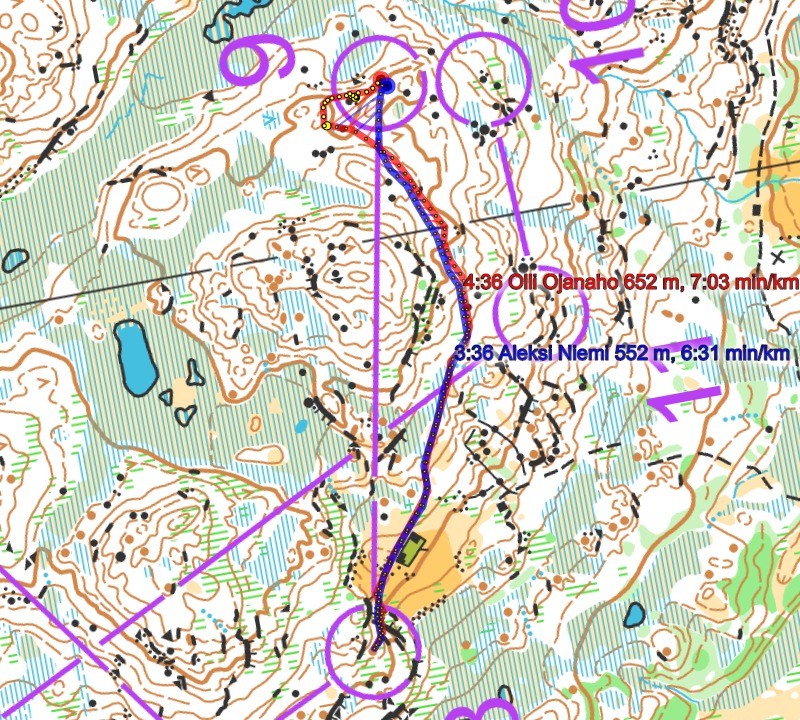
Another problematic leg was the second leg – see for example Thomas Curiger’s problems here. The typical mistake here was to enter the area around the control too far left – and then searching too far to the left. Probably direction running over the big marsh was the problem. See also a similar issue for Jonas Hubacek further down.
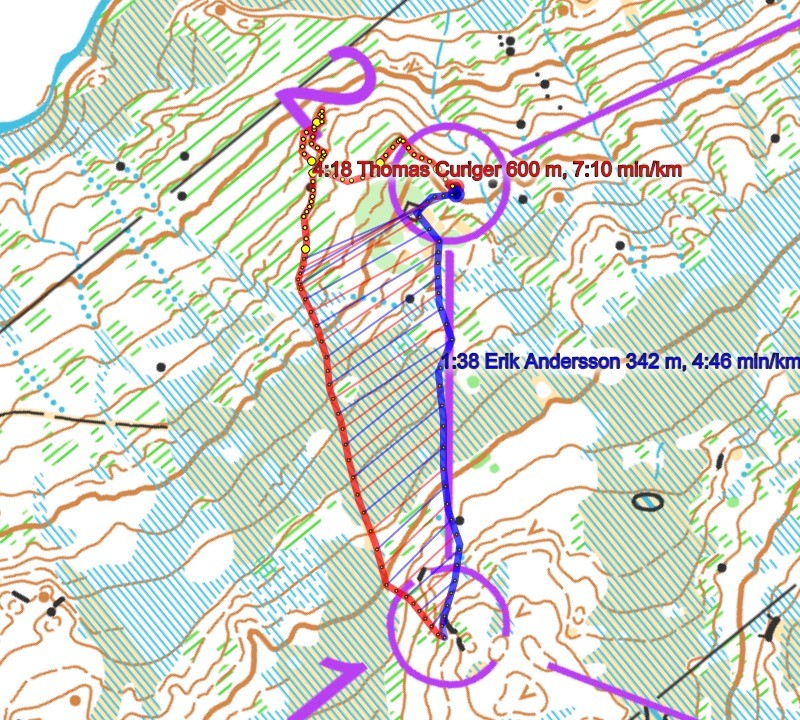

Several also had trouble with some of the shorter legs – like the leg to the 4th control (below) and the 11th control (top of the article).
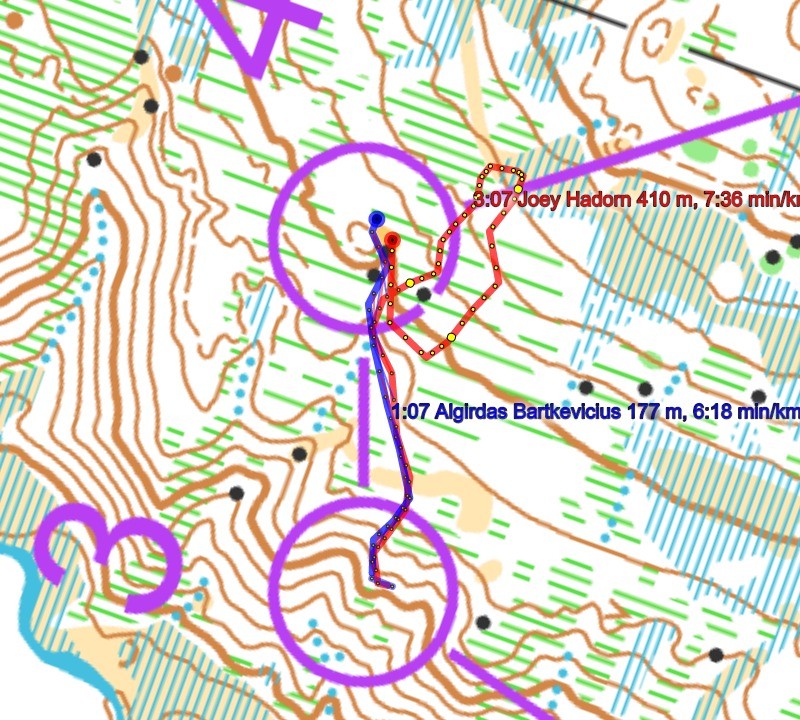
On the long legs there were smaller time differences, though. On of the few legs with real routechoice differences was the leg to the 12th control where some runners lost time by going down to the left. Notably Simon Hector lost more than a minute here – effectively the gold medal chances.

On the leg to control 14 Markus Holter ran very well – but it was rather his execution than his route choice that was significantly better than the others.
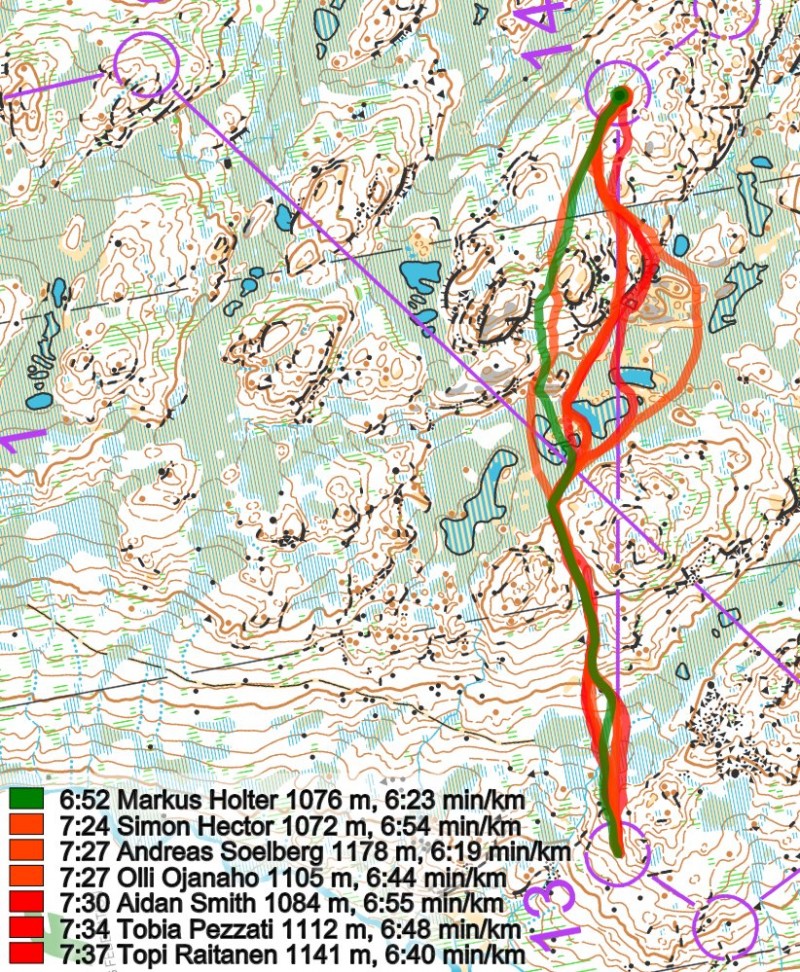
The longest leg to control 7 was also more about execution than about routechoice:
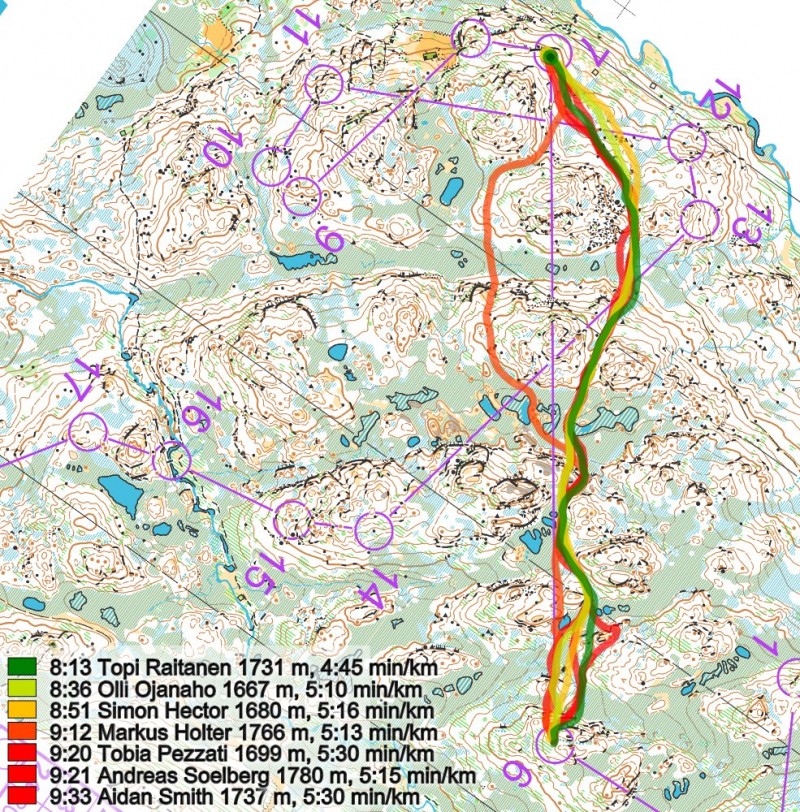
- GPS analysis illustrations for all legs, men (split times shown are actual split times)
- GPS illustrations of selected time losses (Facebook album)
Analysis women
Sara Hagstrom (SWE) won 40 seconds ahead of Anna Haataja (FIN) with Sandrine Mueller (SUI) in 3rd at 2:13. Sara Hagstrom won 2 of 17 legs and did less than a minute of mistakes. Hagstrom was in the lead all the way from the start to the finish – and although she had some poorer legs inbetween, this was a very stable race without real mistakes.
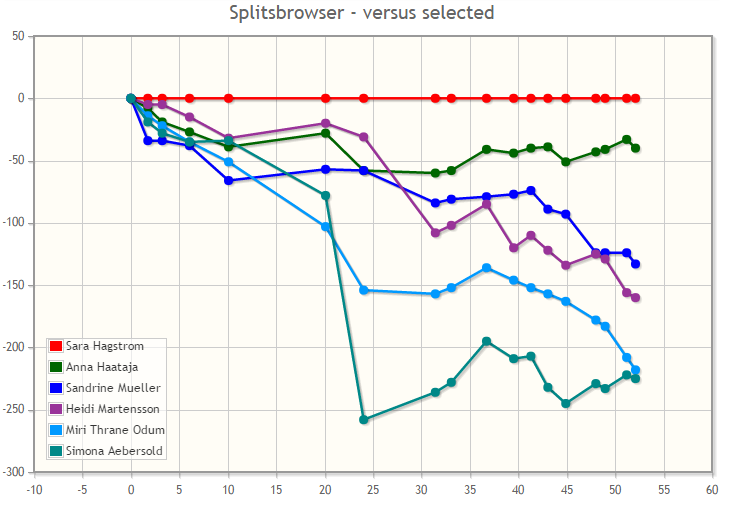
All the women in Top 5 had small time losses – but Simone Aebersold in 6th, the JWOC Sprint champion – had a big mistake which nearly cost her a medal. Aebersold had an estimated time loss of 3:12, the largest being 2:31 (leg 6).
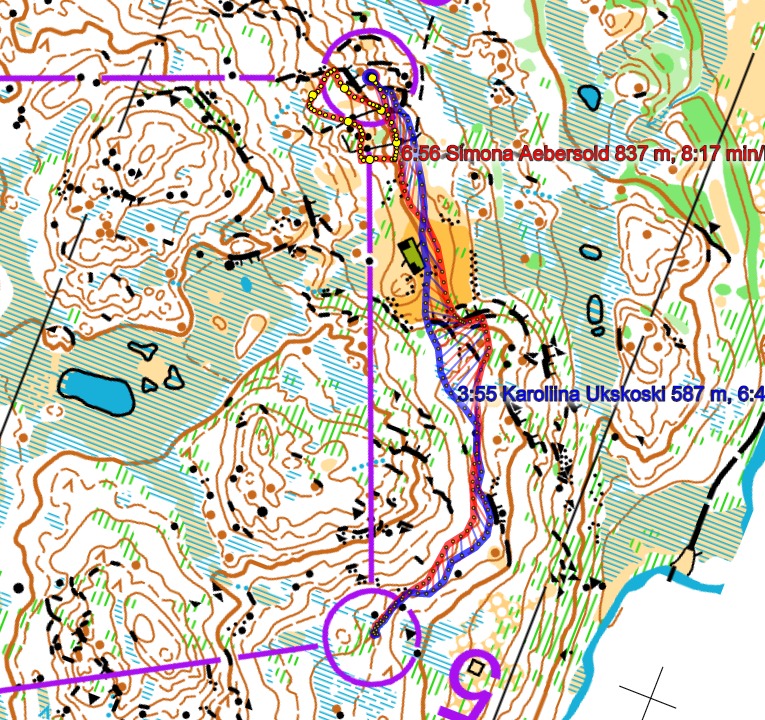
The long 7th leg was problematic for many of the women – several were in the fight for a top position but lost significant time here. This was partly due to problems close to the control circle and partly due to wrong routechoice (going too far right).
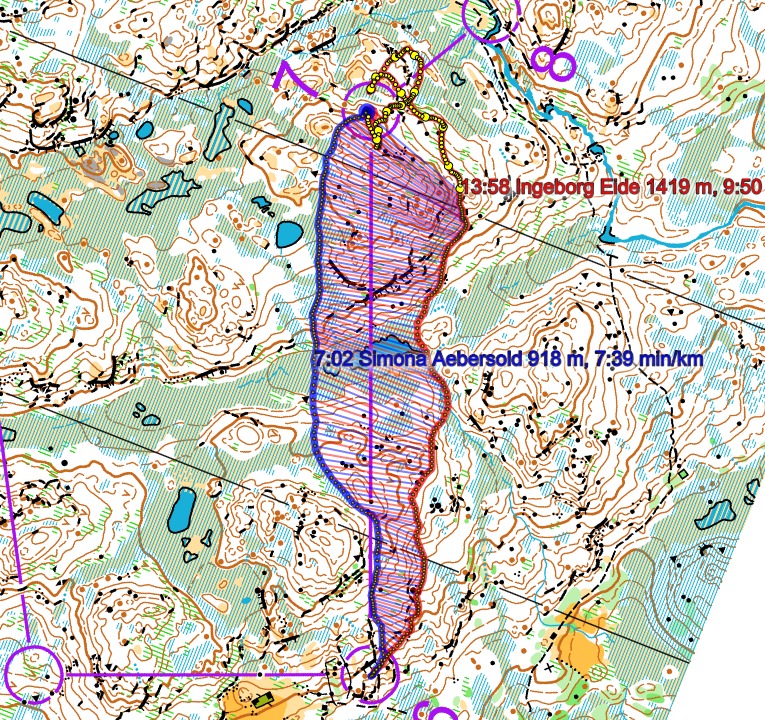
Some runners also lost time on the long leg to control number 5, for example Simona Aebersold who went too far right (see illustration below). Generally there were small differences for the different routes for this leg – similar to the other long legs, though.
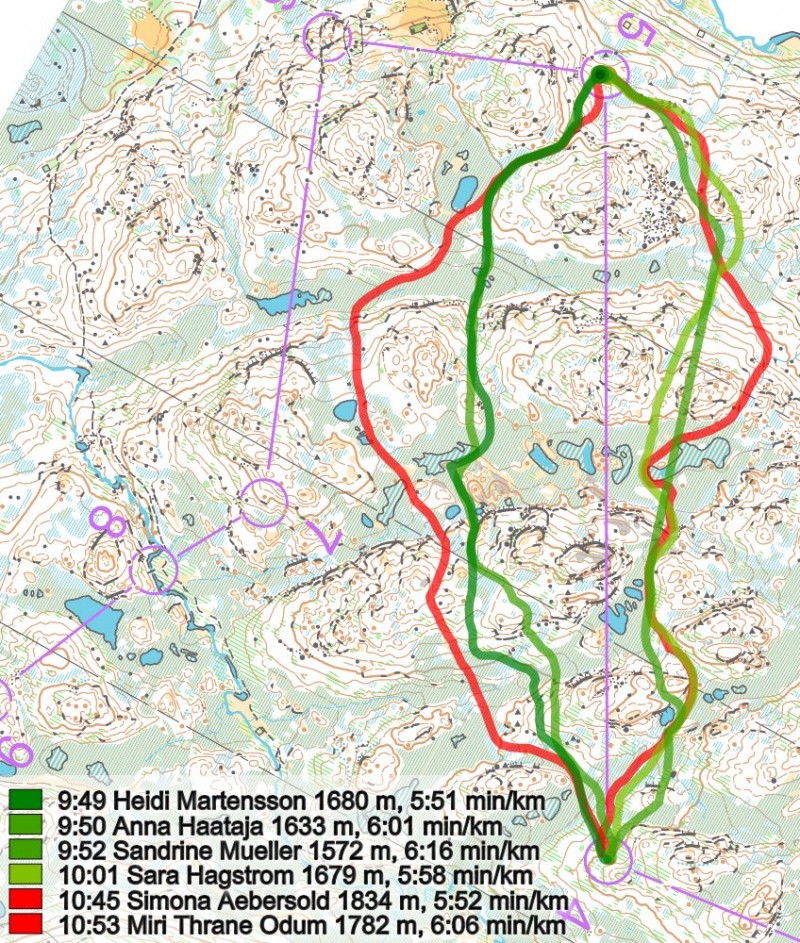
One routechoice which turned out to become decisive was the route to the last control. Here some runners – notably Heidi Mårtensson in 4th – decided to take a route to the left instead of going direct on the road through the houses. This cost Mårtensson 38 seconds to the best split time – and she was only 27 seconds behind the bronze medal.
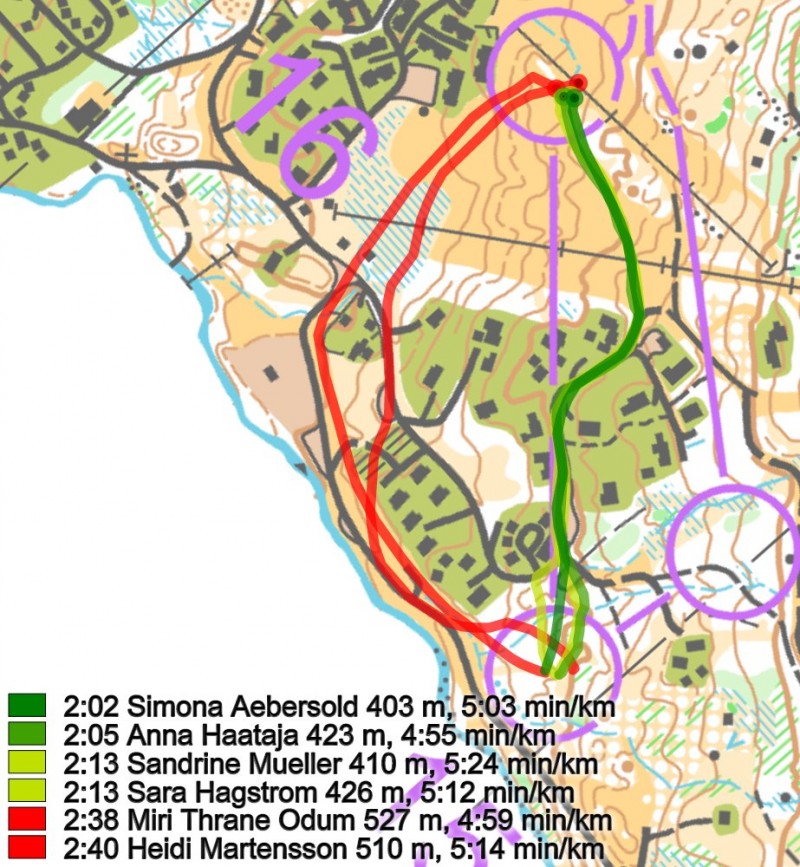
- GPS analysis illustrations women (split times shown are actual split times)
- GPS illustrations of selected time losses (Facebook album)
 World of O News
World of O News

